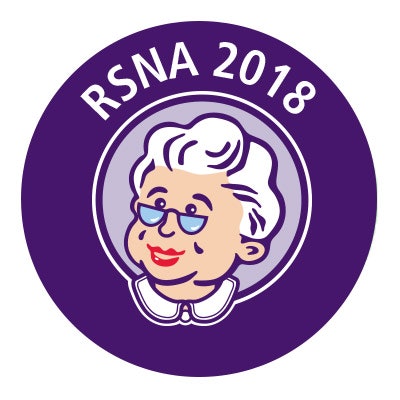
CHICAGO - Nearly a decade ago, CT surpassed x-ray as the imaging modality of choice for lung cancer screening. But could there be an even better option for the test? Researchers from the U.S., Switzerland, and Germany made the case for MRI in a Monday presentation at RSNA 2018.
In their simulation study, presenter Dr. Bradley Allen from the University of Wisconsin-Madison and colleagues used a Markov cohort model to simulate lung cancer screening with MRI instead of CT. Their analysis revealed that MRI lung screening, compared with CT screening, would lead to a comparable amount of life years saved at a considerably lower economic cost.
The improved classification of malignant lung nodules with screening MRI relative to CT could result in fewer false-positive results and may decrease the need for follow-up studies, Allen told session attendees.
"We believe lung MRI has the potential to be a cost-effective alternative to low-dose CT for lung cancer screening," he said.
Better value proposition
Two large-scale studies -- the National Lung Screening Trial (NLST) and the Dutch-Belgian Randomized Lung Cancer Screening (NELSON) trial -- have demonstrated the potential of CT lung cancer screening to reduce mortality in long-term smokers by a significant degree. However, the high false-positive rate and radiation exposure associated with the test have given rise to criticism concerning its overall value.
 Dr. Bradley Allen from the University of Wisconsin-Madison.
Dr. Bradley Allen from the University of Wisconsin-Madison.Prior research, including results from the German Lung Cancer Screening Intervention Trial (LUSI), has shown that MRI may allow for a slightly more accurate classification of malignant lung nodules than CT does -- potentially reducing the need for follow-up studies and decreasing long-term costs, Allen said. MRI could, thus, be a better value proposition for patients and healthcare institutions.
To test this concept, Allen and colleagues turned to mathematical modeling. They formulated a Markov model that used the StoTree cohort algorithm to simulate lung cancer screening with CT and MRI.
The researchers incorporated into the model published data concerning lung cancer incidence and mortality, as well as the sensitivity and specificity of lung nodule detection on CT and MRI scans. (Haaf et al reported a mean specificity of 73.42% for CT, and Sommer et al reported a mean specificity of 97.1% for MRI.) They also input approximate imaging, workup, and treatment costs of the exams at U.S. hospitals in 2018 from literature. For example, they used a price range of $200 to $900 for an MRI exam.
The model also assumed that the cohort would consist of 60-year-olds who were actively smoking two packs per day and had a smoking history of at least 36 pack years. Taking into account all of this information, the model predicted the diagnostic performance and cost-effectiveness of screening with each modality.
Lower downstream costs
After performing the simulation, the researchers found that screening with CT or MRI resulted in a nearly equivalent outcome for patients in terms of life expectancy -- though MRI had an improved diagnostic accuracy and lower false-positive rate than CT.
"The real benefit of MRI in the study is the nearly fivefold reduction of false-positive screens relative to CT," Allen said.
Furthermore, screening with MRI instead of CT resulted in a net monetary benefit of $1,720 for men and $2,342 for women, as long as the MRI screening exam had a sensitivity of at least 0.81 and cost no more than $396 per exam. They also estimated a total cost-effectiveness ratio of $258,169 per life year for men and $403,888 for women.
| CT vs. MRI for lung cancer screening based on Markov modeling | ||||
| CT | MRI | |||
| False-positive screening rate | 28% | 2.6% | ||
| Sensitivity | 49% | 52% | ||
| Specificity | 73% | 97% | ||
| Life expectancy per patient | 13.29 life years | 13.28 life years | ||
| Men | Women | Men | Women | |
| Total average screening cost per year | $96,980 | $102,217 | $93,942 | $99,104 |
| Net monetary benefit | $0 | $0 | $1,720 | $2,342 |
The more favorable outcome for MRI screening was mostly driven by MRI's improved specificity for characterizing solid nodules, compared with CT -- leading to a significant decrease in downstream workup costs, Allen said.
There were several limitations of this study: The analysis included the detection of solid nodules but not ground-glass nodules, and it determined cost-effectiveness based on workup and treatment costs rather than on quality-adjusted life years.
"These findings yield an extremely high cost-effectiveness ratio in favor of MRI of hundreds of thousands of dollars saved for each year of life gained from screening," he said. "The model suggests that use of a less sensitive but more specific test for lung cancer screening such as MRI would be beneficial."


.fFmgij6Hin.png?auto=compress%2Cformat&fit=crop&h=100&q=70&w=100)





.fFmgij6Hin.png?auto=compress%2Cformat&fit=crop&h=167&q=70&w=250)











